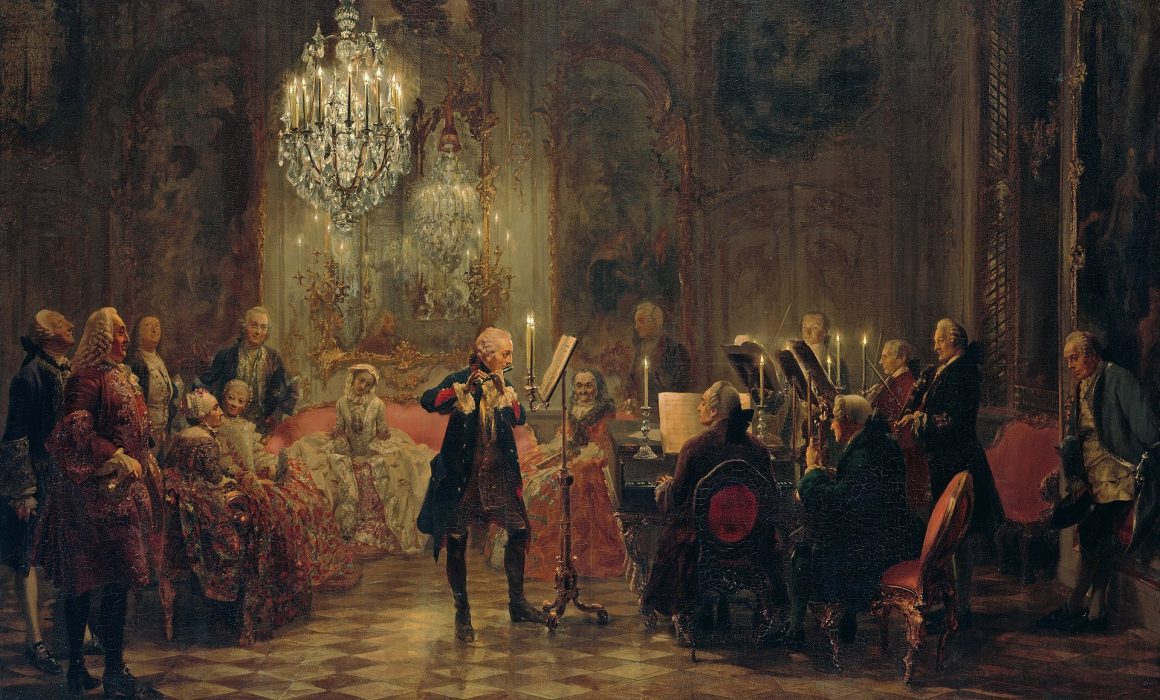Quantz 250: an anniversary
Quantz is a marvelous composer.
Jean-Pierre Rampal
Johann Joachim Quantz, one of the most important proponents of the transverse flute in the 18th century, a performer as well as a composer, died in Potsdam on July 12, 1773. This year, 2023, is the 250th anniversary of his death. An anniversary is a magnificent pretext for a concert, and this one suits Les Boréades perfectly!
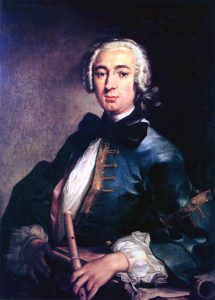
Quantz en Italie, tableau de Francesco Solimena
Quantz was born in 1697 in Oberscheden in the Electorate of Hanover. His father, a blacksmith, died in 1707. Quantz’s uncle, a town musician in Merseburg, took the boy on as an apprentice. When the uncle died, Quantz continued his musical education with another relative, the organist Johann Adolph Fleischhack. During the five years of this apprenticeship the young man learned to play 10 or so instruments—as did Telemann and many other musicians of the day—specializing in the violin and oboe. Eager to move on from his first jobs playing in town bands, to perfect his art and to find a more interesting post—one in which he would not be ”the best among inferior musicians,” as he put it in his autobiography, published in 1754—Quantz began traveling to different regions of Germany.
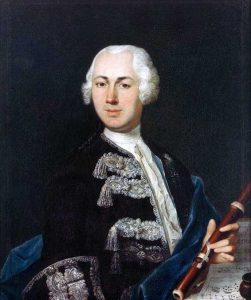
Quantz, tableau de Johann Friedrich Gerhard, 1735
In 1714, during a stay in Pirna, southeast of Dresden, he first encountered the concertos of Antonio Vivaldi. They were a revelation (as they were to Bach, who discovered them at the same time). ”As they represented a completely new way of composing music they impressed me not a little,” Quantz wrote. He obtained a number of these concertos, and reported that ”their splendid ritornellos served as excellent examples in the future.” (Several decades later, however, taste had changed, and he decided that Vivaldi had indulged in too much opera and fallen into frivolity!) In 1717, Quantz perfected his mastery of counterpoint in Vienna with Jan Dismas Zelenka and then joined the town band of Dresden, the capital of Saxony and a first-rate musical center. Here Augustus II the Strong, Elector of Saxony and King of Poland, had assembled the so-called Polish Chapel, an ensemble comprising a dozen exceptional performers and composers, including not only German but also French and Italian musicians.
More than anything else, Quantz wanted to be part of this ensemble. In 1718, he was hired as oboist in the prince’s chamber ensemble (also known as the Kleine Kammer Musick). The band needed a flutist, so under the tutelage of the great virtuoso Gabriel Buffardin, Quantz set out to master the instrument to which he would devote the rest of his days. With his colleagues, Quantz accompanied the Elector on trips between Dresden and Warsaw. In Vienna in 1723, he was among the plethora of musicians who performed the opera Costanza e Fortezza by Fux to celebrate the coronation of Charles VI as King of Bohemia. He then got the Elector’s permission to travel in Italy, which was then, and for some time would remain, the European capital of music. He arrived in Rome in July, 1724, where, for the next six months, he studied with Francesco Gasparini, until his teacher told him he had nothing left to teach him. Quantz went on to visit all the great Italian cities and their opera houses, meeting everywhere with great composers and brilliant performers—instrumentalists, castrati, and opera singers.
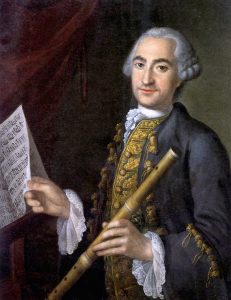
Quantz, tableau anonyme
Spring 1726 found Quantz in Paris. Like many foreigners, he did not appreciate French opera. But for the past three decades, France had been the source of the first significant body of compositions for the traverso; French makers had perfected the instrument at the end of the preceding century, and French composers had explored and uncovered all its potential in numbers of dance suites. Adopting the form of the Italian sonata and developing what would become the galant style, Quantz tirelessly disseminated flute repertoire outside France. Recalled to Dresden in 1727, our composer nonetheless made a long detour via London and Holland before ending his Grand Tour.
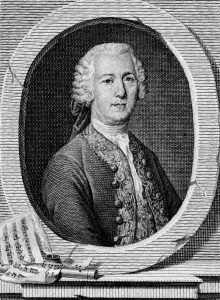
Quantz, gravure de Johann David Schleuen, 1767
In 1728, Quantz accompanied Augustus II on a state visit from Saxony to Berlin. He favorably impressed the Queen of Prussia, Sophia Dorothea, who hired Quantz to come twice a year to give flute lessons to her son. The crown prince, who would later become Frederick II, was keen on culture and music. Despite the violent disapproval of his father, the domineering Frederick William I, known as the Soldier King, the prince practiced the flute passionately, and Quantz found him to be a very gifted student. Frederick hand-picked a team of musicians—including the violinist Franz Benda and the harpsichordist Carl Philipp Emanuel Bach—to play at the palaces of Ruppin and Rheinsberg. After his accession to the throne in 1740, they became the official court musicians. Quantz, named Court Composer, was responsible for organizing private musical evenings in Berlin, Potsdam, and soon at Frederick’s summer palace, Sanssouci, and for providing the music that Frederick played at these soirées. The works, chosen to please the king’s taste, were played in rotation in strict order; and only Quantz was authorized to critique the king’s playing. In 1752, keen to transmit his art, Quantz published a major treatise on flute playing, Versuch einer Anweisung die Flöte traversiere zu spielen. This work is of importance not only to flutists; it is an indispensable source of information on the musical practices and tastes of the period. We should mention that our composer was also a flute-maker, and made various improvements to the instrument.
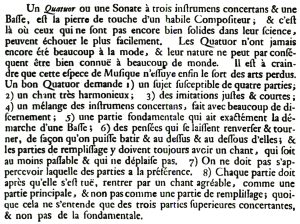
Quantz, Essai d’une méthode pour apprendre à jouer de la flûte traversièàre, Berlin, 1752
Quantz composed a third of his works in Dresden and two-thirds in Berlin. Almost all remained in Berlin in manuscript form, the exclusive property of the king. Very few were diffused in his lifetime. We are now happily rediscovering his oeuvre: almost 300 concertos for flute, strings, and basso continuo, in which Quantz greatly enlarges the form established by Vivaldi; some 200 sonatas for flute and bass; 40 or so trio sonatas; and didactic works for solo flute. In style, Quantz belongs to the so-called Berlin school of the late Baroque, a beefier, German version of the Italian style, and a precursor of the galant. Quantz paved the way for a German style that synthesized and surpassed both Italian and French styles; and soon enough the Classical style, particularly its Viennese version, would emerge to dethrone Italian supremacy. In his music, whether tender, serene, joyous, or spirited, in the poise and variety of the fast movements of his concertos as well as in the touching sensitivity of their slow movements, our composer demonstrates a remarkable sense of melody.
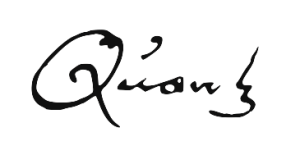
Quantz signature
In 2002 flutist Mary Oleskiewicz discovered Six quartets for flute, violin, viola, and basso continuo by Quantz in Berlin’s Sing-Akademie manuscript collection. In all likelihood, these quartets were composed in Dresden between 1727 and the early 1730s, after Quantz had returned from his Grand Tour. Quartets were rarely composed in that period; not until 20 years later did the likes of Telemann and Gabriel Guillemain begin writing their ingenious, galant, and almost conversational quartets. For Quantz, well prepared by his studies of counterpoint with Zelenka and Gasparini, the quartet was ”the touchstone of an authentic contrapuntist and also a real pitfall for a musician lacking experience and compositional skills.” In his Versuch, Quantz explains that to succeed, a good quartet requires ”a subject appropriate for a treatment in four parts”, ”a fundamental part with a true bass quality”, good harmonious melodies easily modified by the principles of counterpoint, an ensemble of instruments in which no one dominates but each sings independently, and ”middle parts that are at least passable and not unpleasing.” With their themes combining and exchanging in intricate counterpoint, his quartets, structurally modeled on the Italian concerto, show a great deal of balance and pure likability.
© François Filiatrault, 2023
Translated by Seán McCutcheon
The Quantz 250 concert will be presented on November 3, 2022 at 7:30 p.m. in the Salle de concert du Conservatoire.


